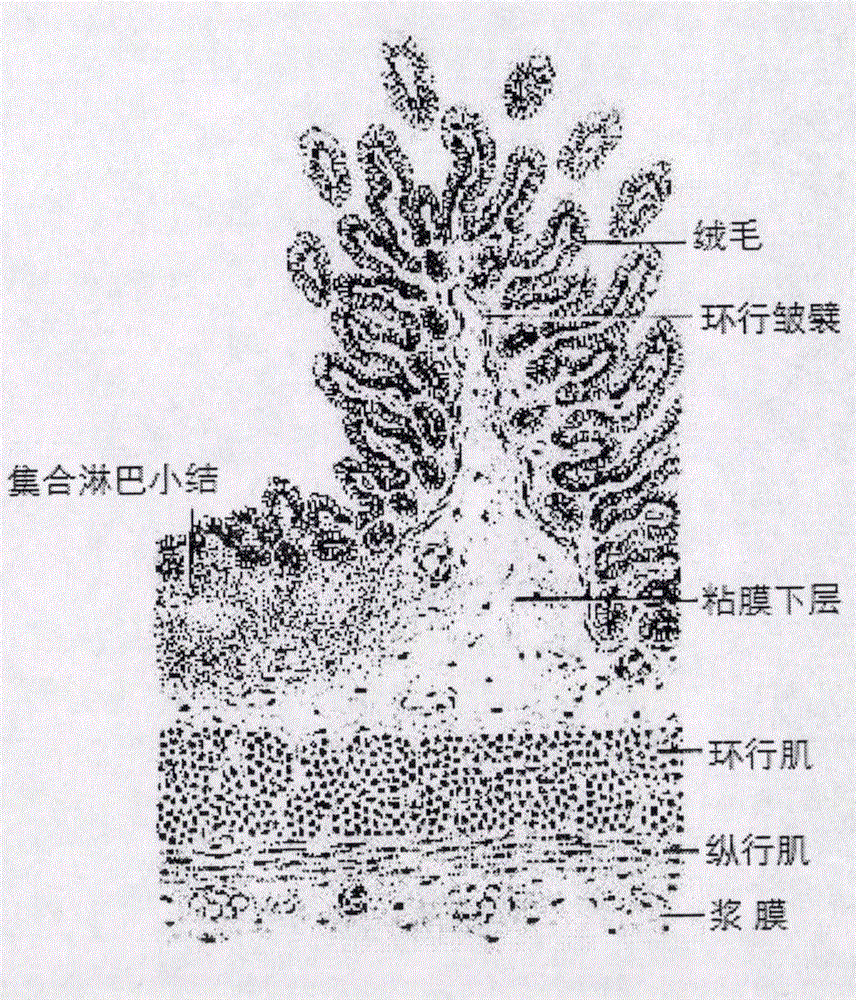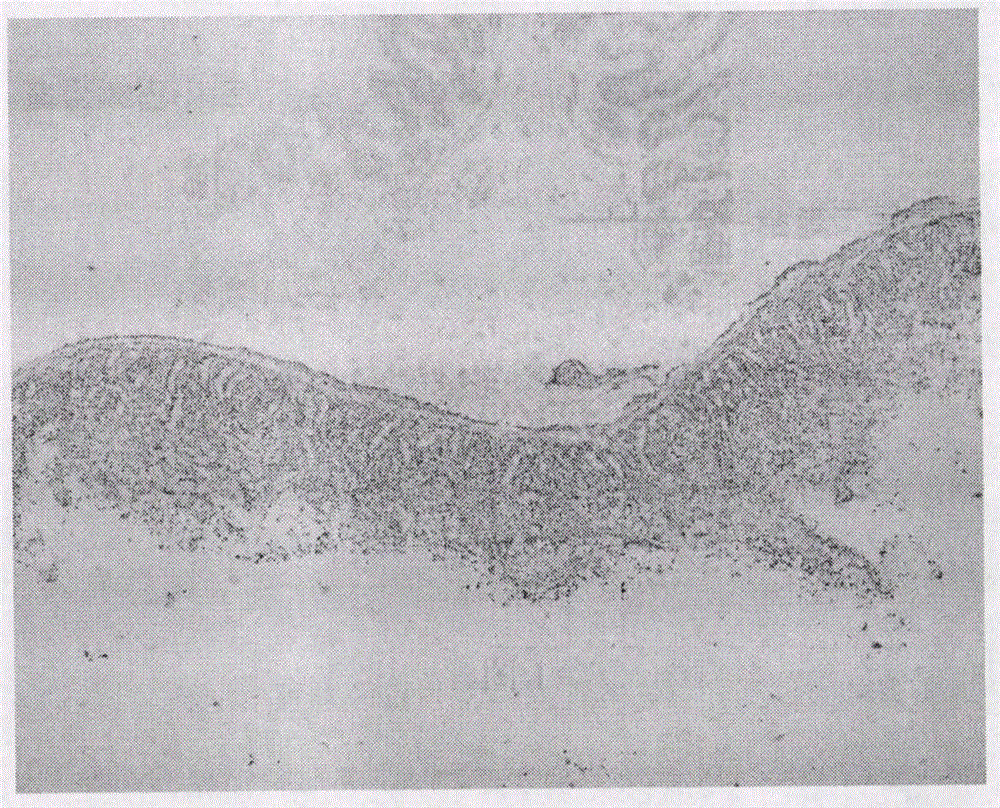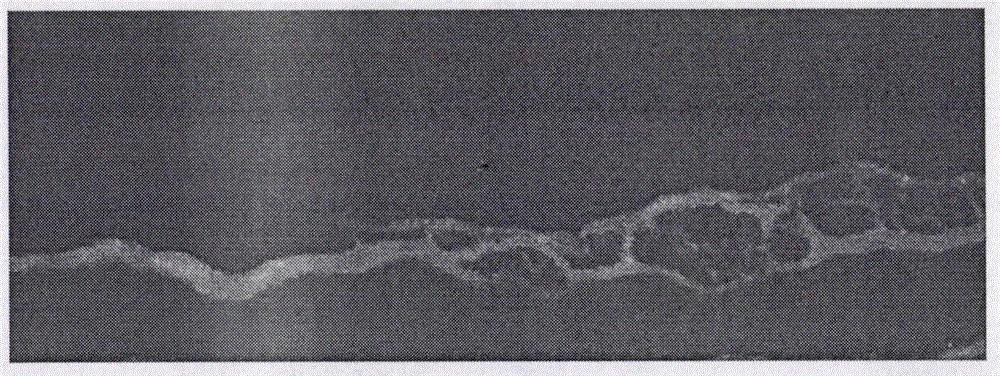Preparation method of new biological patches
A biological patch, a new type of technology, applied in tissue regeneration, medical science, prosthesis, etc., can solve problems such as excessive cell residue, poor decellularization effect, and immune rejection
- Summary
- Abstract
- Description
- Claims
- Application Information
AI Technical Summary
Problems solved by technology
Method used
Image
Examples
Embodiment 1
[0025] Preparation of acellular protection solution for tendon and small intestinal serosa patches:
[0026] 1. Take 8g of DMEM powder and add 500ml of deionized water, dissolve and sterilize under high pressure;
[0027] 2. Take 30g of chondroitin sulfate, add 275ml of deionized water, heat, dissolve and autoclave to make a chondroitin sulfate solution; add 35g of low-molecular-weight dextran to 100ml of water for injection to dissolve and autoclave to make a low-molecular-weight dextran solution; L -Histidine hydrochloride 3.83g, add 100ml of water for injection to dissolve and autoclave to make L-histidine hydrochloride solution;
[0028] 3. Take a sterile container and add 500ml of DMEM culture solution, 275ml of autoclaved chondroitin sulfate, 100ml of low-molecular dextran solution, 100ml of L-histidine hydrochloride solution, and 25ml of Hepes buffer; add 0.5g of allopurinol, hydroxy Propyl methylcellulose 6g, reduced glutathione 1.5g, dexamethasone injection 1.8mg, le...
Embodiment 2
[0031] Preparation of decellularized porcine tendon patches.
[0032] 1. Take fresh (obtained within 3 hours after slaughter) pig thigh tendon tissue, and ensure that the outer tendon membrane is intact. Cut the aponeurosis to make a 1×3cm piece of tendon tissue, and seal it in a plastic bag filled with protective solution;
[0033] 2. Under the condition of 400MP high static pressure, treat 4 times, each time is 2 minutes;
[0034] 3. After taking out the tendon, place it in a protective solution containing 2% TritonX-100+600U / ml DNase at a temperature of 25°C, set the speed of the shaker at 100 rpm, and treat for 2 hours;
[0035] 4. After the detergent and enzyme treatment, take out the decellularized tendon and rinse it in the protective solution for 2 hours;
[0036] 5. The prepared decellularized tendon was attached to the nitrocellulose mold, put into anhydrous calcium chloride molecular sieve for dehydration, bagged, sealed and marked, and then irradiated with cobalt...
Embodiment 3
[0039] Preparation of serosal patch of decellularized porcine small intestine.
[0040] 1. Take fresh (obtained within 3 hours after slaughter) porcine small intestine (including jejunum and ileum) tissue, rinse with water, cut into 5cm sections; bluntly scrape the small intestinal mucosa, submucosa and muscular layer, leaving only the fibrous serosa layer , rinsed with PBS; the tissue of the fibrous serosa layer of the small intestine was made into a tissue piece of 1 × 3 cm, and sealed in a plastic bag filled with the above-mentioned protective solution;
[0041] 2. Under the condition of 300MP high static pressure, treat 4 times, each time is 1 minute;
[0042] 3. After taking out the small intestine slices, place them in a protective solution containing 1.5% TritonX-100+500U / ml DNase at a temperature of 25°C, set the shaker speed to 100 rpm, and treat for 1 hour;
[0043] 4. After the detergent and enzyme treatment, take out the decellularized intestinal fibrous serous me...
PUM
 Login to View More
Login to View More Abstract
Description
Claims
Application Information
 Login to View More
Login to View More - R&D
- Intellectual Property
- Life Sciences
- Materials
- Tech Scout
- Unparalleled Data Quality
- Higher Quality Content
- 60% Fewer Hallucinations
Browse by: Latest US Patents, China's latest patents, Technical Efficacy Thesaurus, Application Domain, Technology Topic, Popular Technical Reports.
© 2025 PatSnap. All rights reserved.Legal|Privacy policy|Modern Slavery Act Transparency Statement|Sitemap|About US| Contact US: help@patsnap.com



